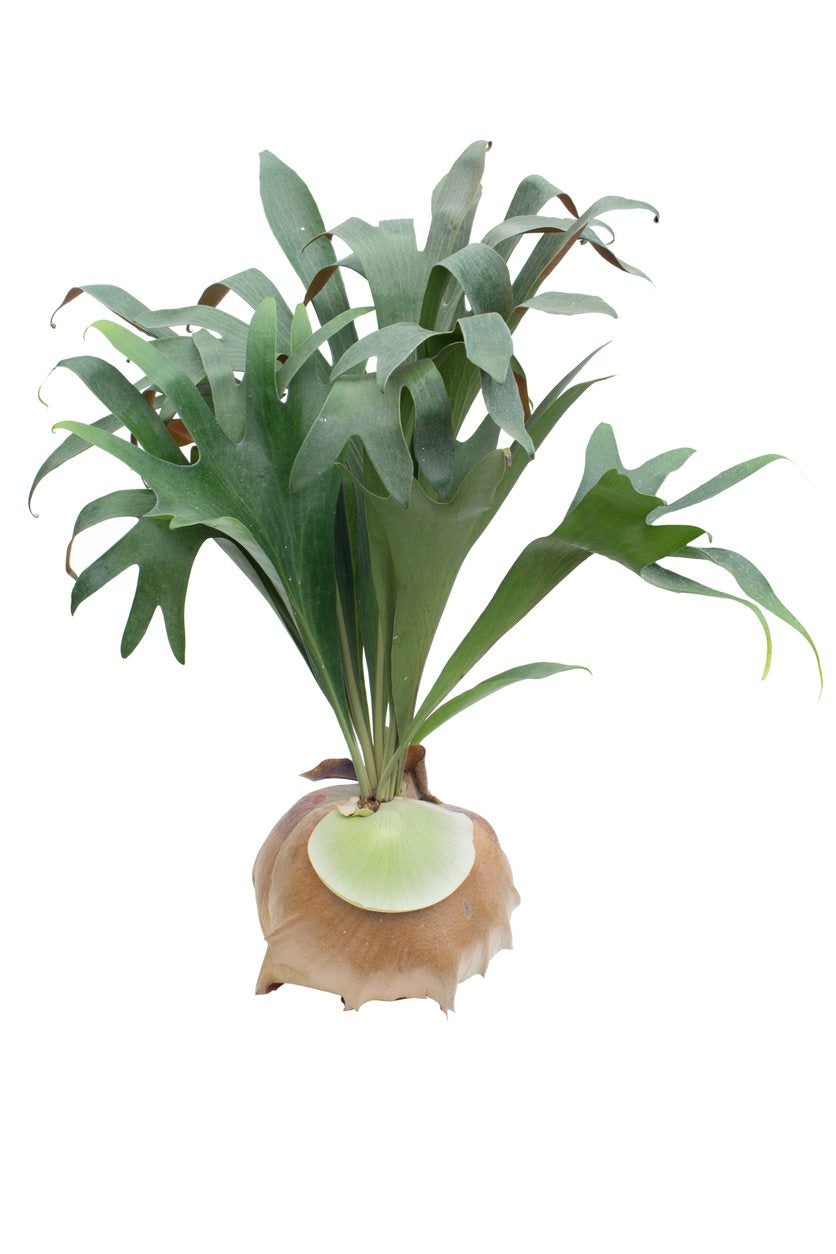Staghorn Fern Mounts: Growing Staghorn Ferns On Rocks


Staghorn ferns are fascinating plants. They live epiphytically in nature on trees, rocks, and other low soil structures. This ability has led collectors to mount them on driftwood, rocks, or other materials that allow adherence. These plants are native to Africa, southern Asia, and parts of Australia. Mounting staghorn ferns is relatively simple, provided you remember the plant's growing requirements.
About Mounting Staghorn Ferns
It is a wonderful surprise to find a plant hanging on a wall or living in an unexpected place. Mounts for staghorn ferns provide the perfect opportunity to create just such unexpected delights. Can staghorn ferns grow on stones? Yes. Not only can they grow on stones, but they can be mounted on a myriad of objects. All you need is a little imagination, sphagnum moss, and some wire. Staghorn ferns have sterile basal leaves called shields. They also have foliar fronds which will get fuzzy brown growth on them that are sporangia or the reproductive structures. In the wild, these plants may be found growing in old walls, crevasses in rock faces, in tree crotches, and any other handy location. You can mimic this by tying the plant to any structure that appeals to you. The trick is to tie it on loosely enough that you don't damage the plant but securely enough for vertical display. You can also mount the fern to a base structure to lay horizontally. Growing staghorn ferns on rocks or boards is a classic method of display that really mimics the way the plant grows in nature.
Rock Mounts for Staghorn Ferns
Growing staghorn ferns on rocks is an unpredictable method of mounting these tropical plants. As epiphytes, staghorns gather moisture and nutrients from the air. They don't really need potting soil but do appreciate some organic cushioning such as sphagnum moss. The moss will also help indicate when it is time to water. When the moss is dry, it's time to water the plant. To make rock mounts for staghorn ferns, start by soaking several handfuls of sphagnum moss in water. Squeeze out extra moisture and place the moss on your selected stone. Use fishing line, wire, plastic tubing, plant tape, or whatever you choose to loosely bind the moss to the stone. Use the same method to affix the fern to the moss. It is that simple.
Mounting Staghorn Ferns to a Vertical Wall
These remarkable plants make an attractive addition to an old brick or rock wall too. Keep in mind they will not survive cold temperatures, so outdoor mounting should only be done in warm climates. Find a chink in the wall, such as the area where mortar has fallen out or a natural crack in stone. Drive two nails into the area at a space that will flank the edges of the fern. Affix sphagnum moss with a bit of aquarium cement to the wall. Then tie the fern to the nails. Overtime, new large foliar fronds will cover the nails and material used to tie it on. Once the plant begins to spread roots into the crack and has attached itself, you can remove the ties.
Sign up for the Gardening Know How newsletter today and receive a free copy of our e-book "How to Grow Delicious Tomatoes".

Bonnie Grant is a professional landscaper with a Certification in Urban Gardening. She has been gardening and writing for 15 years. A former professional chef, she has a passion for edible landscaping.